What Size Wire for a Dryer (Guide)
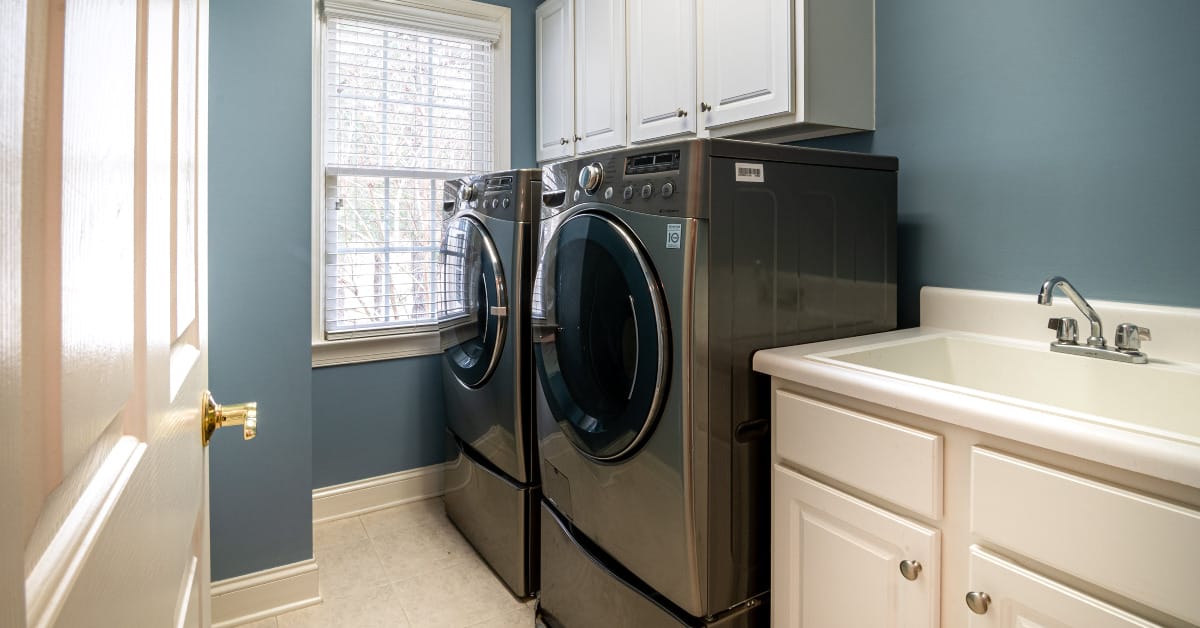
In the world of home improvement, details matter a ton, especially when dealing with high-powered appliances like dryers. I’ve seen my fair share of projects, and I can tell you, there’s little room for error here.
Key Takeaway: For the high-amperage 220v dryers, you’ll need a robust 10 AWG wire and a 30-amp breaker. And for those 110v units, a 12-14 AWG wire should do the trick, paired with a 15 or 20-amp breaker.
In this guide, I’m taking you through setting up your dryer correctly. We will sidestep those common slip-ups and show how crucial it is to match everything perfectly.
So, let’s get into its nuts and bolts and ensure your dryer setup is spot on!
Understanding Your Dryer’s Voltage Needs
Hey, DIY fans! Setting up your electric dryer is like solving a puzzle – you’ve got to match the pieces correctly.
Each dryer is its beast with specific power needs, and understanding these is key to choosing the right wire and breaker. Let me guide you through this.
220-Volt vs. 110-Volt Dryers
You’ll find dryers typically come in two types: 220 volts and 110 volts. The 220-volt dryers are the full-on electric ones.
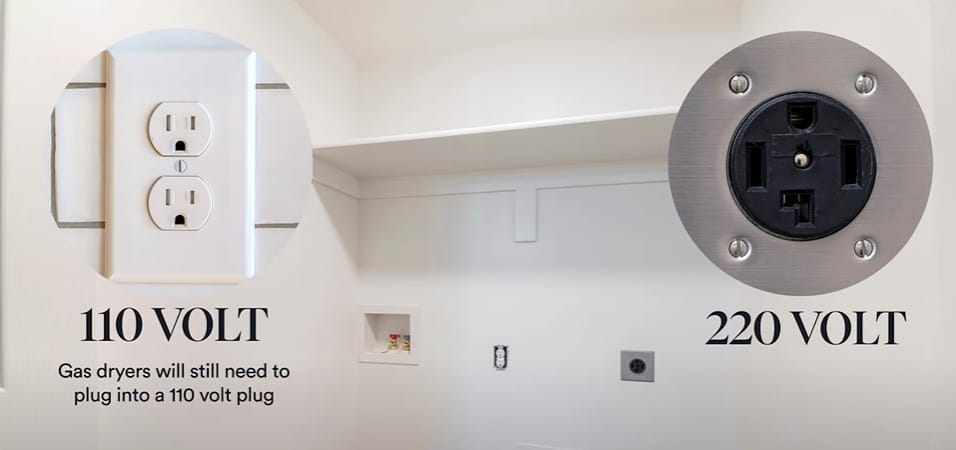
They’re like the muscle cars of dryers, needing more power (or amperage) to run because they’re doing the heavy lifting with just electricity. I’ve installed a bunch of these, and let me tell you, they need robust wiring to handle the load.
On the flip side, 110-volt dryers often come with a gas connection. They’re like your hybrid vehicles, not solely relying on electricity for power.
Voltage Variations – No Sweat!
Don’t get tangled up here. Whether it’s labeled 240 volts, 220 volts, or 120 volts instead of 110, the setup requirements are the same. It’s like when someone says soda or pop – different words, same bubbly drink.
Why Wire Size Matters
Let’s discuss choosing the right wire size for your electric dryer and DIY fans. It’s a bit like picking the right size pipes for a plumbing project – too small, and you’ve got a problem; too big, and you’re wasting resources. Let me break it down for you.
The Role of Amperage: Think of amperage like water flowing through a hose. The more water (or amperage) you need, the bigger the hose (or wire).
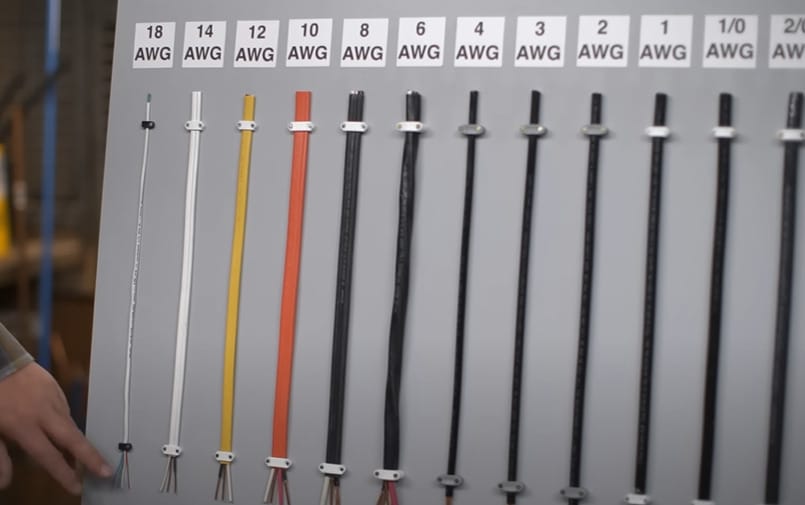
If you go too small with your wire size for the amount of current your dryer needs, you’re setting yourself up for a potential electrical fire. I’ve seen a few scary situations where undersized wires got way too hot – not a risk worth taking.
Picking the Right Wire for 220 Volts Dryers
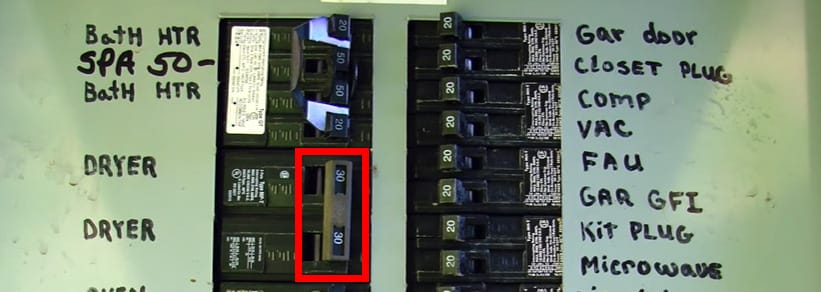
Your typical 220-volt dryer is a powerhouse, needing a wire that can handle its demand. That’s where 10 AWG wire comes in. It’s like the heavy-duty truck of wires, built to handle up to 30 amps of power.
This is crucial because if you skimp on the wire size, you could overheat the wire, and trust me, that’s a fire waiting to happen.
The Right Choice for 110 Volts Dryers
If you’ve got a 110-volt dryer, the story changes slightly. These guys are more like your everyday sedan – they don’t need the massive power lane.
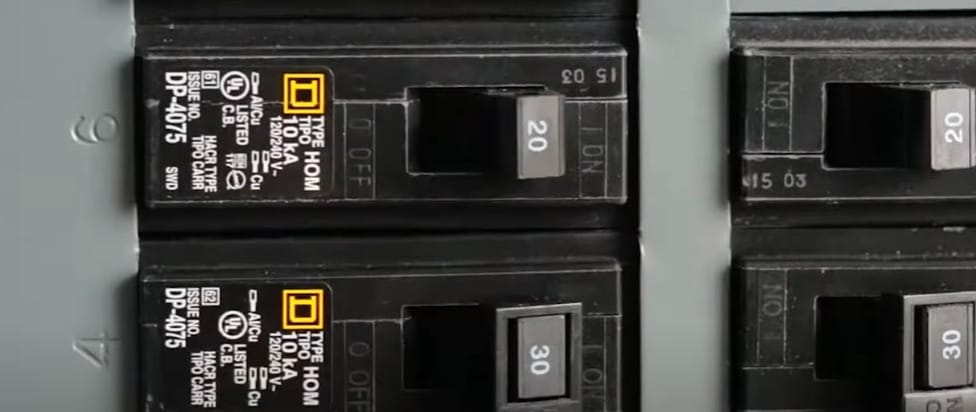
You can safely go with a 12 AWG wire for breakers up to 20 amps or even a 14 AWG wire for those 15-amp breakers. It’s all about matching the wire size to the dryer’s power needs without going overboard.
Why Following Dryer Specs is Key
Always check your dryer’s manual. Manufacturers specify the wire size for a reason, and it’s your best guide.
I remember working on a custom laundry room, and the dryer’s specs called for a specific wire size – deviating from that would have voided warranties and, more importantly, compromised safety.
Deciding Between 3-Prong and 4-Prong Outlets
Here’s some electrical trivia – newer dryers typically use 4-prong outlets for better safety and grounding. But, if you’re upgrading in an older home, you might still have 3-prong outlets.
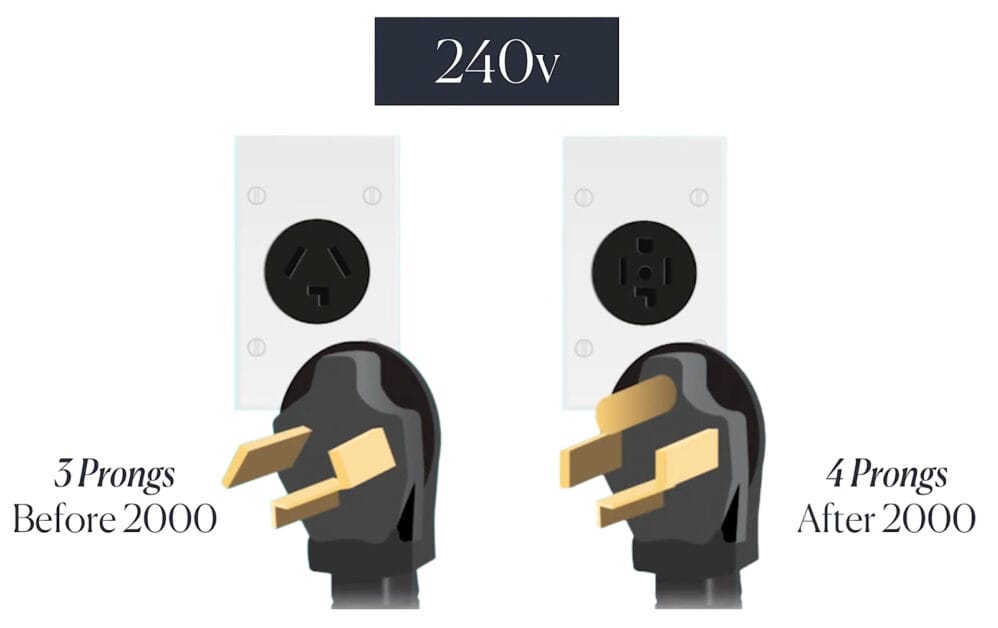
In newer installations, I always recommend going with a 3-prong outlet. It’s the current standard and offers better grounding, which is vital for safety.
Remember, folks, electrical work isn’t the place for guesswork. When it comes to wire size for dryers, getting it right means a safely running appliance and peace of mind.
And when in doubt, don’t hesitate to call in a pro – sometimes, the best DIY is knowing when to hand it off to someone with the right know-how.
The Right Breaker Size – Why Precision Matters
Hey folks, let’s discuss the importance of using the right breaker size for your dryer. Trust me, getting these details right in DIY and home renovations is as crucial as nailing that perfect finish on your deck. Let’s break it down:
Choosing the Correct Breaker Size
When it comes to dryers, especially those power-hungry electric ones, using the correct breaker size isn’t just a suggestion – it’s a must.
I’ve seen plenty of projects where this small detail made a difference. The right breaker ensures your dryer runs smoothly and stays safe from power surges that could turn it into a pricey paperweight.
What If You Go Too Low or Too High?
Lower Amperage Breakers – A Recipe for Tripping
Picture this – you’ve got a dryer that needs a 30-amp breaker, but all you have on hand is a 20-amp one. You might think, “It’ll do for now.” But here’s what happens: The moment that dryer kicks on, it’s asking for more juice than the breaker can handle.
Boom! The breaker trips. It’s like trying to fill a bathtub with a thimble – it just doesn’t cut it. And, if you keep pushing it, you might end up with a fire hazard.
Higher Amperage Breakers – Too Much of a Good Thing
Now, let’s flip the script. You decide to go big and install a 50-amp breaker for a 30-amp dryer. You might feel like you’re giving your dryer a luxury lane of electricity, but you’re setting up a potential danger zone.
If a power surge hits, that oversized breaker might just let it slide, leading to overheated wires and, yep, you guessed it – a serious fire risk. It’s like giving a kid free rein in a candy store; there will be trouble sooner or later.
And remember, if you’re ever in doubt, there’s no harm in calling in a pro. Sometimes, the best DIY move is knowing when to hand it to someone with expertise.
Stay safe and happy DIY-ing!
Frequently Asked Questions
- Can I Use the Same Outlet for a Gas and Electric Dryer?
- This one’s straightforward – nope. Gas and electric dryers have different power needs and use different outlets. A gas dryer plugs into a regular 120V outlet, while an electric dryer requires a 240V outlet.
- What Should I Do If My Home Only Has 3-Prong Outlets?
- If you’ve got an older home with 3-prong outlets, and your dryer requires a 4-prong plug, you’ll need an upgrade. This means swapping out the old outlet for a new 4-prong version and ensuring the wiring in your home can handle it. Safety first – get a qualified electrician to do this.
- Can I Install the Dryer Wiring Myself?
- You might take on this project if you’re comfortable with electrical work and understand your local codes. But remember, working with high-voltage wiring is no joke. Calling a licensed electrician is always safer and smarter when in doubt.
- Do Newer Dryers Have Different Electrical Requirements?
- Newer models might have different requirements, especially those with energy-saving features or smart technology. Always check the manual for the specific electrical needs of your new appliance.
- Is It Necessary to Have a Dedicated Circuit for My Dryer?
- Absolutely! Dryers pull a lot of power, especially electric models. Having a dedicated circuit prevents overloading your home’s electrical system. It’s like having a VIP lane for your dryer’s electricity needs.
References
Organizations:
- National Fire Protection Association (NFPA). https://www.nfpa.org/en
- Underwriters Laboratories (UL). https://www.ul.com/solutions
Books:
- “Wiring a House” by Rex Cauldwell. https://www.barnesandnoble.com/w/wiring-a-house-rex-cauldwell/1118175264
- “Electrical Wiring Residential” by Ray C. Mullin and Phil Simmons. https://www.barnesandnoble.com/w/electrical-wiring-residential-ray-c-mullin/1116778103
Website Resources:
- Energy Star. https://www.energystar.gov/
- The Spruce. https://www.thespruce.com/
Video References:
Designer Appliances
Ask-The-Electrician
This Old House
Boulevard Home
